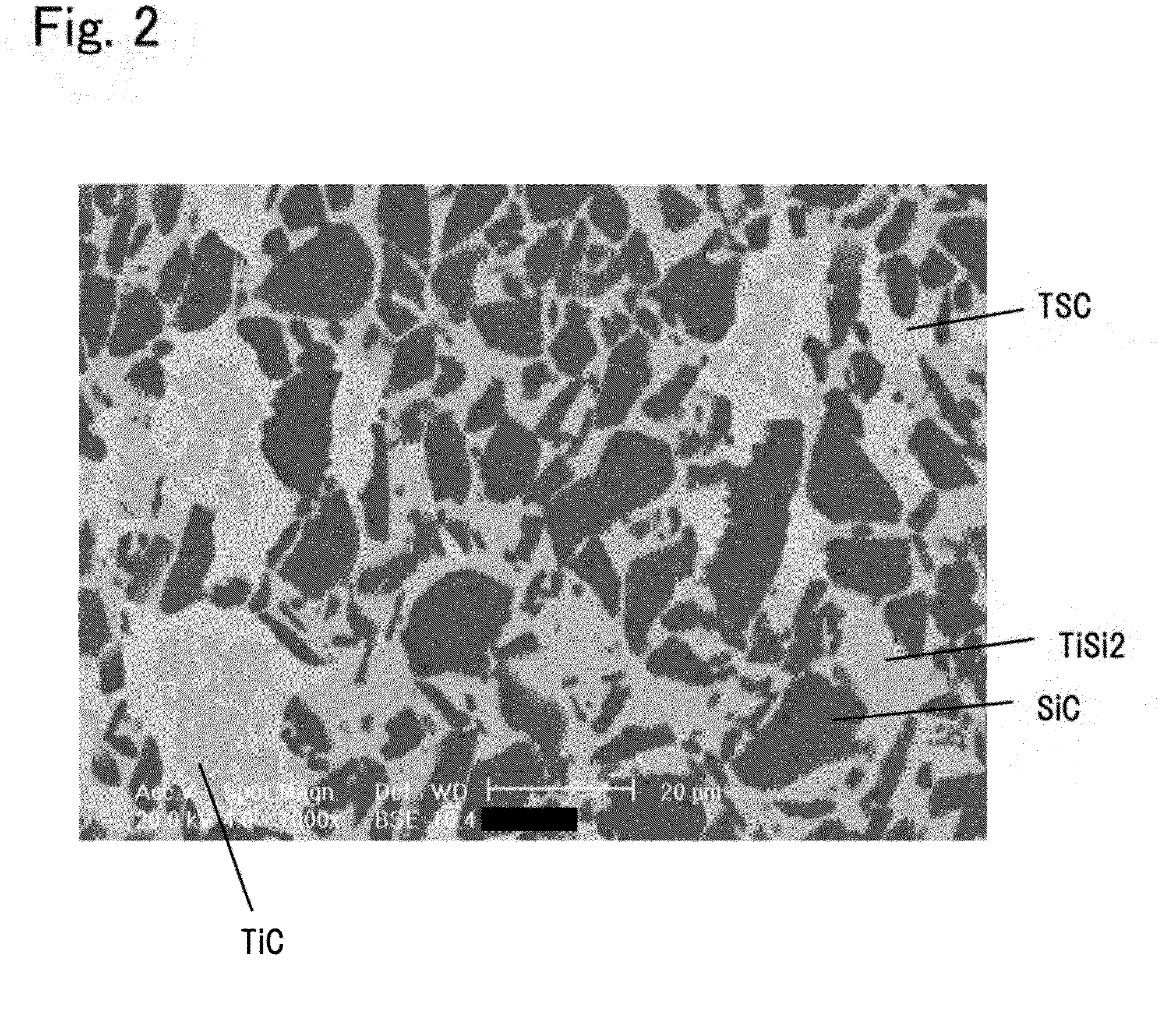Dense composite material, method for producing the same, and component for semiconductor production equipment
- Summary
- Abstract
- Description
- Claims
- Application Information
AI Technical Summary
Benefits of technology
Problems solved by technology
Method used
Image
Examples
examples
[0028]Preferred examples of application of the present invention will be described below. As the SiC starting material, a commercially available product having a purity of 97% or more and an average particle size of 15.5 μm or 6.9 μm was used. A SiC starting material (Experimental Example 28) having an average particle size of 10.1 μm was prepared by mixing the SiC starting material with an average particle size of 15.5 μm and the SiC starting material with an average particle size of 6.9 μm at a ratio of 1:1. As the metallic Si starting material, a commercially available product having a purity of 97% or more and an average particle size of 9.0 μm was used. As the metallic Ti starting material, a commercially available product having a purity of 99.5% or more and an average particle size of 31.1 μm was used. As titanium disilicide, a commercially available product having a purity of 99% or more and an average particle size of 6.9 μm was used.
1. PRODUCTION PROCEDURE
[0029]Compounding...
experimental examples
2. EXPERIMENTAL EXAMPLES
[0035]Tables 1 and 2 show, for the individual Experimental Examples, a: the starting material composition (mass ratio), b: the mass ratio of Si to the sum of Si and Ti (Si / (Si+Ti)), in which Si and Ti originate from starting materials, Si, Ti, and TiSi2, other than SiC, c: the average particle size of starting material SiC, d: hot-press firing temperature, e: presence or absence of liquid phase exudation during firing, f: the number of SiC grains having a major axis of 10 μm or more in an SEM image (backscattered electron image) magnified 1,000 times of a region with a size of 90 μm (length)×120 μm (width) of the dense composite material, g: constituent phases of the composite material and their quantitative ratio obtained from the XRD measurement results (simplified quantitative determination results), and h: basic properties (open porosity, bulk density, 4-point bending strength, coefficient of linear thermal expansion, and thermal conductivity) of the comp...
PUM
| Property | Measurement | Unit |
|---|---|---|
| Temperature | aaaaa | aaaaa |
| Temperature | aaaaa | aaaaa |
| Temperature | aaaaa | aaaaa |
Abstract
Description
Claims
Application Information
 Login to View More
Login to View More - R&D
- Intellectual Property
- Life Sciences
- Materials
- Tech Scout
- Unparalleled Data Quality
- Higher Quality Content
- 60% Fewer Hallucinations
Browse by: Latest US Patents, China's latest patents, Technical Efficacy Thesaurus, Application Domain, Technology Topic, Popular Technical Reports.
© 2025 PatSnap. All rights reserved.Legal|Privacy policy|Modern Slavery Act Transparency Statement|Sitemap|About US| Contact US: help@patsnap.com


